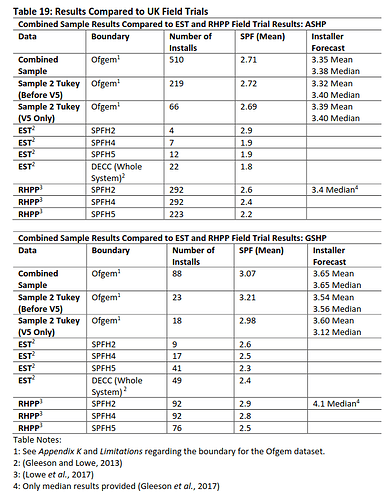Yes that’s a good idea.
Found another trial carried out by Mitsubishi themselves, published 2013 and audited by the EST that achieved an average SPF H4 of 2.9 across 23 sites, though I cant find much more detail on it apart from this press release: https://www.aspenrenewables.co.uk/file_upload/ecodan-trials.pdf
This report for/from RECC published in 2021 seems to give a good overview of the different trials: https://www.recc.org.uk/pdf/performance-data-research-focused.pdf There seems to be another more recent trial by Ofgem, based on RHI / MMSP data, I think the date is ~ 2018/2019 :
The Ofgem dataset results do not all conform to a specific boundary. Most are likely H2 but some may well extend further e.g to include the circulation pump and indoor controls, Im not sure about the immersion heater. Looks like an average of ~2.7 for ASHP’s.
